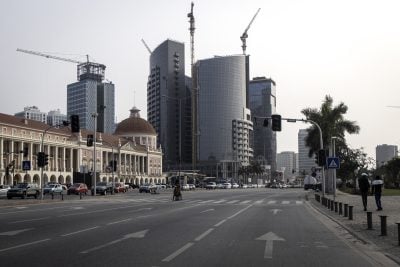The government of Ethiopia is keen to retain state control of a variety of companies but none more so than Ethiopian Airlines. The company is the second-biggest airline in sub-Saharan Africa and is rapidly expanding its range of passenger and cargo services within Ethiopia, to 45 African cities and 72 overseas destinations. The airline has set a goal of overtaking South African Airways (SAA) as the continent’s biggest airline by 2025 and it certainly appears to be expanding more quickly than its South African rival. Revenue has increased by an average of 25% a year over the past seven years, during an otherwise difficult time for the airline industry.
This success may have as much to do with Ethiopia’s geographical location as the management of the company. The country was relatively isolated historically because of its mountainous nature but in aviation terms, it is ideally located between South Asia, the Middle East, Europe and Africa.
As a result, the airline has now established Addis Ababa Bole International Airport as a hub airport, taking advantage of its membership of the Star Alliance, the biggest global airline network. The company has also taken a 40% stake in ASKY Airlines in Togo, in order to use Lomé airport as its West African hub, with connections to 22 West African destinations.
In July, Ethiopian signed a deal to take a 49% stake in the revamped Malawian Airlines with the intention of setting up Lilongwe as its third African hub, in this instance to serve Southern Africa. Malawian Airlines’ predecessor, Air Malawi, ran into financial problems earlier this year. The government of Malawi will retain its controlling stake in the new company, which will receive a Boeing 737 and a Bombardier Q400 from Ethiopian to operate on its new routes.
Further east, Ethiopian already flies from Addis Ababa to New Delhi and Mumbai and now aims to launch services to Bangalore, Chennai and Kolkata, partly in order to attract Indian tourists to Africa. As a result, Indian visitors to East Africa are now likely to enter the continent via the Ethiopian capital and the company hopes that it can persuade tourists to spend at least part of their holiday in Ethiopia itself.
The company’s senior vice president for global sales, Esayas Woldemariam Hailu, says: “We have so many packages for Ethiopian and African tourism which will bring the cost down. A new destination which is yet not explored always comes with a premium, but we may minimise our cost and offer discounts to our customers.”
Also in July, chief executive Tewolde Gebremariam became the first head of an African airline to win the Regional Leadership Award at the Airline Strategy Awards for Regional Leadership in London. The judges praised the firm’s ability to generate rapid growth while keeping costs under control.
Gebremariam said: “I am pleased to receive this prestigious strategy award which is recognition of the hard work and special dedication of the 8,000 employees of Ethiopian Airlines. It is also a confirmation that our vision 2025 strategic road map of fast, profitable and sustainable growth is right and a sound one.”
Biggest in Africa?
Under its Vision 2025 strategy, which was launched in 2010, the company aims to become the leading aviation group in Africa with seven business units generating $10bn in revenue a year. By the same year, it aims for annual turnover of 18m passengers and 820,000 tonnes of cargo, serving 90 international destinations and 26 domestic cities with a modern fleet of 120 aircraft and 17,000 employees. By contrast, in 2012 it carried 5.1m passengers on 57 aircraft, generating $1.8bn in revenue.
Ethiopian Airlines attracted international attention in January, when one of its Boeing Dreamliner 787s caught fire in the US but it is once again using the cutting-edge aircraft on several of its services. On a more upbeat note, Canadian firm Bombardier Aerospace has made Ethiopian Airlines an authorised service facility for its Q400 and Q400 NextGen turobprops. This agreement should strengthen the airline’s aircraft, engine and component overhaul and repair facilities at Bole International, which already has 750 licensed technicians and support staff.
Éric Martel, the president for customer services and specialised and amphibious aircraft at Bombardier Aerospace, said: “This agreement with Ethiopian Airlines – one of Africa’s most respected airlines and a valued Bombardier customer – will provide the growing number of Bombardier operators in this region with more options for high-quality maintenance support closer to their base of operations. We are enthusiastic about the many new opportunities for commercial aviation in Africa and, through sustained investment and focus, we are expanding our support services on the continent at an accelerated pace.”
Want to continue reading? Subscribe today.
You've read all your free articles for this month! Subscribe now to enjoy full access to our content.
Digital Monthly
£8.00 / month
Receive full unlimited access to our articles, opinions, podcasts and more.
Digital Yearly
£70.00 / year
Our best value offer - save £26 and gain access to all of our digital content for an entire year!

 Sign in with Google
Sign in with Google 




